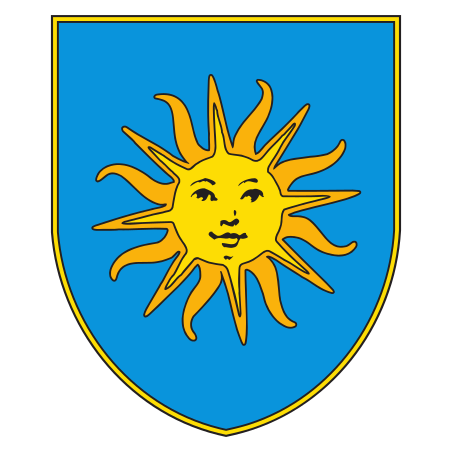Difference between revisions of "Municipality of Koper-Capodistria"
m (jskd zbrisan) |
m (cat) |
||
| Line 85: | Line 85: | ||
*[[Coastal Italian Self-Governing National Community Koper-Capodistria]] | *[[Coastal Italian Self-Governing National Community Koper-Capodistria]] | ||
| + | * [[:Category:Urban municipalities|List of urban municipalities]] | ||
== External links == | == External links == | ||
| Line 93: | Line 94: | ||
[[Category:Funding]] | [[Category:Funding]] | ||
[[Category:Municipal funding]] | [[Category:Municipal funding]] | ||
| + | |||
| + | [[Municipalities]] | ||
| + | [[Urban municipalities]] | ||
Revision as of 14:19, 30 March 2010
The population of Koper is mainly Slovene, but there is also an active Italian minority. Due to the official bilingual policy in the area, the Italian language and all other cultural values of the Italian national minority are preserved. Koper is not only a trade and industrial centre of Slovene Istria, but in many ways also a cultural centre. The town has many schools, ranging from elementary and secondary schools to higher education institutions and faculties such as the University of Primorska, which was established in 2003.
Koper occupies an island close to the shore which has variously been called Kozji otok (Goat's island), Justinian town and, by Slovenes, Koper. The city enjoyed an important position within the Venetian Republic, hence its clear Italian architectural influences (eg Almerigogna Square, one of the most magnificent Venetian Gothic places in Koper). The town has been linked to the mainland since 1825. The newer part of the town has the air of a modern urban settlement with apartment blocks, contrasting with the typical coastal town appearance of the 'island' part.
There are numerous architectural monuments in the old part of the town - from the Rotunda, with its typical Romanesque exterior, to the Praetorian Palace with the town's coat of arms and busts of Koper's important citizens. In the central square are a loggia, which has preserved the charm and character of its 15th-century origins, and the cathedral (the Diocesan seat) with a sarcophagus of St Nazarus and paintings by Vittorio Carpacci. The Belgramoni-Tocco Palace houses the Koper Regional Museum.
Koper is a member of the Slovene Association of Historic Towns.
The Social Activities Office of Koper-Capodistria Urban Municipality acts as a governance and professional body responsible for education, culture, sport, research, health and social care and the prevention of drug addiction. It oversees the activities of cultural public institutes and prepares acts regulating their status and organisation.
Operating alongside Koper-Capodistria’s municipal institutions are a number of important national cultural institutions, including the Regional Archives of Koper.
The local branches of the Union of Cultural Societies of Slovenia (ZKDS) and the Public Fund for Cultural Activities of the Republic of Slovenia facilitate the activities of local cultural organisations and act as mediators in respect of state and municipal funding.
M&KC Koper Youth and Culture Centre with its multimedia activities is a leading creative cultural meeting point.
See also
- Regional Archives of Koper
- Diocesan Archives of Koper
- Srečko Vilhar Public Library, Koper-Capodistria
- Koper Theatre
- Primorska Summer Festival, Koper-Capodistria
- Lutkarnica - Koper Puppetry Studio
- Alpe Adria PUF Festival
- M&KC Koper Youth and Culture Centre
- Koperground Festival
- PINA Primorje Information Atelier
- Kolosej Koper
- Centre for Music Education Koper
- Obala Mixed Choir Koper
- Koper Brass Orchestra
- Music Friends Association, Koper
- Consulate General of Italy in Koper-Capodistria
- Coastal Italian Self-Governing National Community Koper-Capodistria



